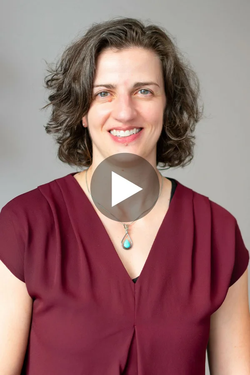If you’ve ever felt stifled by the thought or expectation of being exclusively committed to one partner at a time, aka monogamy, then you might be interested in polyamory. Polyamory is a provocative word that seems to draw strong reactions of animosity and praise, which is ironic considering the etymology. Polyamory comes from the Greek word ‘poly’ to mean ‘many’ and the Latin word ‘amor’ to mean ‘love.’ So, let’s explore what it means to have ‘many loves’ a little more in-depth.
What exactly is polyamory? The opposite of monogamy? Well, yes, but it’s a bit more complicated than that.
What is Polyamory?
Polyamory is a non-monogamous relationship model that falls under the umbrella term Consensual Non-Monogamy (CNM) or Ethical Non-Monogamy (ENM). Polyamory is the practice of having multiple consensual romantic relationships simultaneously, as opposed to monogamy which involves a romantic and sexual relationship between two people exclusively. While sex can come with the territory, polyamory emphasizes romantic versus sexual plurality. Basically, polyamory isn’t about having sex with multiple people as much as being able to love and be in relationships with multiple people.
At the heart of polyamory and most CNM relationships is the philosophy that love is infinite and that we can love more than one person at a time without that love diminishing between partners. The philosophy supports that sexual, romantic, and relational exclusivity are not necessary for profound, fulfilling, and healthy relationships. And above all, CNM and ENM emphasize informed consent for all parties involved, both directly and indirectly.
While polyamory has become more common and accepted in modern society, it’s still misunderstood and even vilified, which is unfortunate considering it promotes love, respect, consent, and honest communication.
A study conducted by the Journal of Sex & Marital Therapy found that 1 in 5 Americans has participated in some form of CNM in their lifetime. The study did not find any disparities in age, education level, income, religion, region, political affiliation, and race among polyamorous persons. All walks of life were found to participate in polyamory.
Polyamory can be a lifestyle choice or an identity. Some people identify as ‘poly’ because asking to restrict their expression of love to only one person at a time goes against their belief system and happiness. Polyamory stresses choice and freedom to dictate your boundaries and guidelines in your relationships. Your relationship model is subject to change and evolve with time and experience. Many people align as “monogamish,” a term coined by sex columnist Dan Savage because sometimes they prefer monogamy and sometimes polyamory, which is perfectly acceptable.
The Rules of Polyamorous Relationships
There are many different styles and models of practicing polyamory, and no, it isn’t all anarchy (unless you are a relationship anarchist, but that’s a conversation for another time).
In polyamorous relationships you set your boundaries if the rules of engagement are mutually agreed upon by all parties involved, aka informed consent.
Polyamory can be empowering because, unlike the set expectations attached to monogamy, you are free to create relationship dynamics that cater to your happiness, goals, and those of your partners.
This is not to say you can’t also do the same in monogamous relationships, but those rules and structures are inherently more rigid and limiting by nature. For instance, in monogamous relationships, there’s typically a linear progression of events and expectations or ‘relationship escalator’ that moves from dating casually to dating exclusively to cohabitation to marriage. These rules and expectations don’t necessarily apply to people in polyamorous relationships.
Polyamorous Relationship Structures
Polyamorous people can engage in hierarchal or non-hierarchal relationship structures.
Hierarchal Relationships
Hierarchal relationships emphasize a hierarchy of importance where one relationship takes precedence over another. People distinguish their ‘hierarchy’ by terms like primary, secondary, or tertiary partner in their relationship. A primary partner is at the top of the hierarchy and can be someone with whom a person is married, living with, raising children, or financially involved.
Sometimes these delineations are preceded by circumstance and resources rather than reflective of emotional connection or privilege. While love is an infinite resource, time is not. If you live with a poly person with whom you share the responsibilities of raising a family, circumstance might dictate that is your primary partner.
These arrangements don't mean that a secondary or tertiary partner doesn't receive love as deep as the primary partner, but that specific resources, i.e., time, money, energy, might vary due to circumstance. However, it can vary by choice too.
Although, some polyamorous relationships do prescribe a hierarchy of love where one partner is put above all others. In these arrangements, it is common for primary partners to establish how they engage with secondary partners and even have the power to veto one partner's secondary relationship. Hierarchal love is a divisive concept even within some polyamorous communities, but ultimately it boils down to the personal preferences of parties involved.
Non-hierarchal Relationships
On the other hand, non-hierarchal relationships, also known as Egalitarian Polyamory, are where all partners are assigned equal value and contribute equally to each other’s life decisions and relationships. In practice, it might look like equal access to love, attention, and affection or where everyone comes together in ‘kitchen-table polyamory’ or ‘polycules’ to discuss mutually beneficial arrangements and decisions that affect everyone.
What Polyamory is not:
We’ve covered what polyamory is, so let’s break down what polyamory is not:
Polyamory is not the same as polygamy
Polyamory is romantic involvement with multiple partners but does not necessitate marriage, whereas polygamy is marriage to multiple people or having multiple spouses.
But wait, isn’t polygamy illegal? Why, yes, it is. Polygamy is illegal in all 50 United States, even Utah.
I’m sure you’re familiar with the practice of marriage plurality by the members of the Church of Jesus Christ of Latter-day Saints. In 1890 the Church of Latter-day Saints formally abandoned the practice of marriage plurality, but it remained observed by some members and splinter sects.
However, as of March 2020, Utah decriminalized polygamy from a felony to an infraction. Renewed attention concerning the criminalization of polygamy was made popular by the reality TV family, The Browns, in the TLC series “Sister Wives.”
Polygamy is a gender-neutral term regarding marriage to multiple persons, with gender delineations in its three main sub-categories: Polygyny, Polyandry, and Group Marriage.
- Polygyny is where a man takes multiple wives. Of those who practice polygamy, polygyny is the most common.
- Polyandry is where a woman takes multiple husbands. This type of polygamy is less common.
- Group Marriage involves marriages between several men and women.
Polyamory is not the same as cheating or infidelity
Let’s dispel this misconception quickly - polyamory is not the same as infidelity or cheating when informed consent is observed and respected. The central tenet of polyamory is consent and communication. All parties must agree upon the boundaries established and the people involved.
Although polyamorous relationships are quite different from monogamous ones, rules still exist, making it possible to cheat in a polyamorous relationship. If you violate the trust or boundaries that you and your partners have set, that is considered cheating. Though simply having multiple partners is not considered infidelity.
Polyamory is not the same as swinging
Swinging is a form of CNM but is not the same as polyamory. Swingers are married couples that engage in consensual sex with people outside their relationships. Swingers can date multiple partners simultaneously and have sexual relationships, but the difference is in commitment levels. The primary goal of swinger relationships, partner-swapping, or spouse-swapping is usually sexual gratification or motivated by the want for sexual diversity. Polyamory, on the other hand, is focused on building committed, romantic relationships among multiple partners, not just sexual relations.
Polyamory is not solely motivated by the want for more sex
Polyamorous people often face criticism that their life choices are motivated by greed, underscored by the classic adage, ‘they just want to have their cake and eat it too”. Sure, sex can follow a romantic relationship, but not always. For example, some polyamorous people identify as asexual.
As the Journal of Applied Philosophy so eloquently puts it: “polyamory is notable for privileges of emotional intimacy with others. Polyamory is distinguished from some other forms of ethical non-monogamy in that the relationships involved are loving intimate relationships, as opposed to purely sexual relationships.”
The main goal of polyamory is to establish intimate and respectful relationships with multiple people. Sex is a possible consequence but not the objective.
Polyamorous relationships are not impervious to jealousy
Jealousy happens; it’s a universal human experience, so people who practice polyamory still become jealous or insecure in their relationships. However, polyamorous people understand that jealousy comes with the territory of polyamory and are willing to navigate it with their partners. Open and honest communication about the experience of jealousy can help poly partners cope and manage, as well as mindfulness techniques, reflective practices, and therapy or outside counsel.
Polyamory is not doomed to fail
Polyamory might be a new concept to wrap your head and heart around, so it’s understandable to doubt how polyamory could succeed. But it does for some.
A 2018 study found no difference in relational and sexual satisfaction scores between monogamous and non-monogamous people. A 2019 study examined how monogamous and non-monogamous relationships affected eroticism and emotional well-being and found that polyamorous relationships experienced more nurturance from primary partners and more eroticism from secondary partners than those in monogamous relationships. The findings suggest that polyamory may present an opportunity for people to experience heightened eroticism and emotional well-being at the same time.
All existing evidence suggests that the best model for relationship happiness is personal preference. How very sex positive.
It’s not all sunshine and roses. A study published in the Archives of Sexual Behavior found that those who engage in non-monogamous relationships can internalize negative views about themselves or their relationships against a cultural backdrop that aggressively espouses monogamy.
Is Polyamory for you?
Has your interest been piqued? Polyamory is a continuously evolving concept that can offer freedom but isn’t for everyone. Here are a few things to consider before engaging in a polyamorous relationship.
Evaluate your emotional intelligence level
Before jumping into polyamory, it’s important to understand your beliefs and comfort level regarding love and intimacy. Below are some questions that can help you assess your emotional intelligence and your potential to handle polyamorous relationships.
- How do you define attraction?
- Do you find yourself attracted to more than one person at a time?
- What are your time management skills?
- How much time do you have to offer potential partners?
- How do you define commitment in a relationship?
- What are your beliefs and expectations around commitment?
- Can you commit to handling multiple relationships? If so, in which ways? Emotional? Physical? Energetic?
- What are your beliefs about love, sex, and intimacy?
- Do you find you often experience jealousy in relationships?
- How do you handle jealousy?
- Do you have strong communication skills?
- How do you navigate boundaries?
- Are you good at respecting another's boundaries, or do you take those personally?
- How much time and energy do you require from a partner?
Arm yourself with credible information
Knowledge is power, so make sure you research different takes and perspectives on polyamory. Stock up on books, podcasts, articles, and other materials to provide more details about polyamory to make the most informed decision. Speak with people in polyamorous relationships to intimately understand the realities of polyamory. And if you are having a hard time navigating this, seek the help of a therapist or counselor who specializes in non-monogamous relationships. Remember to keep an open mind while doing your research. The goal is to choose a relationship model that serves your goals and happiness.
Resources:
- Polysecure: Attachment, Trauma, and Consensual Nonmonogamy by Jessica Fern
- Opening Up: A Guide to Creating and Sustaining Open Relationships by Tristan Taormino
- The Ethical Slut: A Practical Guide to Polyamory, Open Relationships & Other Adventures by Janet W. Hardy and Dossie Easton
Prepare yourself for “the talk” with your family and loved ones
Since polyamory has yet to be fully embraced by society, opening up to your family and loved ones may come with a heavy toll. Start with people you know you can rely on for moral support. Prepare yourself for the possibility of being judged, misunderstood, shamed, or even ostracized.
If you are currently in a monogamous relationship and would like to transition into polyamory, be honest and open when communicating with your partner. Use as much “I” language as possible, be as respectful as possible, and allow your partner time and space to process the information. Try to listen more than speak once you’ve shared your desire for polyamory. Navigating this transition may require external help from an objective party like a couple’s therapist.
No relationship structure is superior to another. Whether you decide to explore polyamory, monogamy, or something entirely in between is your privilege. Remember, love and pleasure are about happiness and honest communication, which starts with you.



















































